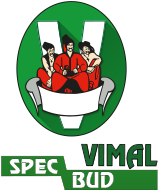Trough Belt Conveyor – is a type of conveyor with a belt shaped like a trough, supported by troughing idlers. Trough conveyors are designed for inclined transportation of food and non-food bulk materials. Inclined trough conveyors are most commonly used when there are elevation differences in the transport zone, ensuring gentle lifting or lowering of the material.
Trough belt conveyor designs vary depending on their purpose, but they almost always consist of the following main parts and units:
✅ supporting frame;
✅ drive – motor reducer;
✅ drive drum;
✅ tension drum;
✅ support rollers;
✅ conveyor belt;
✅ control system;
✅ auxiliary equipment – belt tracking sensors, overflow sensors, etc.
he supporting frame is mounted on a stationary or mobile base and serves as the foundation for the entire structure. Support rollers are attached to it, along which the conveyor belt moves. The belt runs on troughing idlers that form a trough shape, which helps prevent material spillage in problem areas during movement or sudden stops. All troughing idlers are equipped with external bearing units, allowing maintenance (lubrication of bearings) to be performed without disassembling the equipment. The belt is driven by a drive drum. The drum is mounted on a shaft that is set in motion by a drive motor-reducer attached to the supporting frame. The second drum is called the tension drum, which rotates on a shaft that can move along the axis of the frame and provides belt tension. The trough conveyor can form a trough using either two or three rollers.
|
Two-Roller Trough Belt Conveyor
Used for transporting light loads or in areas with low production capacity.
.png)
|
|
Three-Roller Trough Belt Conveyor
Used for transporting heavy loads or on conveyors with high production capacity. The belt width starts from 600 mm.
.png)
|
The distance between roller supports for bulk materials can range from 1.0 to 1.5 meters, depending on the belt width and the material density. At minimal conveyor inclines, a standard belt without cleats or chevrons is usually sufficient. However, if the incline exceeds 20 degrees, we recommend equipping the conveyor with a chevron belt. Chevrons are ribbed patterns on the belt surface that provide better grip and support, allowing the material to be transported at an incline of up to 50 degrees. Belt cleaning is provided by brushes rotating in the opposite direction of belt movement, as well as scrapers, hydraulic, pneumatic, vibration, and other cleaning devices.
The choice of a suitable belt and the size of the chevron depends on the type of material being transported and the incline angle of the conveyor.
| Type of material (product) |
Conveyor inclination angle |
| |
Chevron Height of Conveyor Belt |
| |
15 mm |
25 mm |
32 mm |
| Powdered (flour, lime, etc.) |
25° |
28° |
30° |
| Bulk (corn, barley, wheat, sand) |
20°-25° |
25°-30° |
25°-30° |
| Sliding material (crushed stone, gravel, rock) |
25° |
28° |
30° |
| Sticky (wet clay, wet sand, ash) |
30°-35° |
35°-40° |
40°-45° |
| Packaged (bags, paper sacks, jute bags) |
30°-35° |
35°-40° |
35-40° |
Additionally, upon your request, WE can equip the conveyors with the following optional components:
- sides;
hoppers;
covers, enclosures;
wheels for mobile conveyors;
trays for collecting spilled material;
supports with screw height adjustment of ±50 mm;
metal detector;
frequency converter for adjusting the conveyor speed;
reversing mechanism to change the direction of belt movement;
profiles, cleats, corrugated sidewalls on the conveyor belt.
We are located in Chernihiv and manufacture trough belt conveyors of any size to order, based on customer requirements, in the shortest possible time and at competitive prices. You can purchase trough belt conveyors manufactured by VIMALSPETSBUD by submitting an online application or by contacting us by phone. (Go to contacts)

.png)
.png)